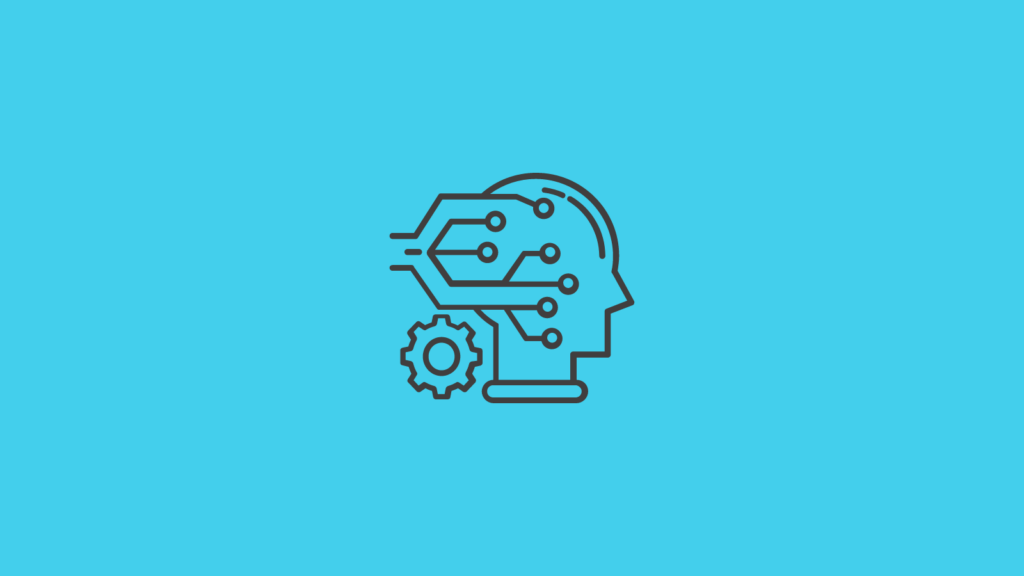Artificial Intelligence and Machine Learning: Common Challenges
Artificial Intelligence (AI) and Machine Learning (ML) are two buzzwords that dominate discussions nowadays.
These technologies are more than just catchphrases; they reshape hub industries like retail, healthcare, and finance.
Yet, despite their prominence, there is considerable uncertainty regarding what they signify and how they vary.
Chapters
Artificial Intelligence: What Is It?

Artificial Intelligence (AI) is like teaching a computer to think and make decisions like a human.
Imagine you have a robot friend who can learn from their experiences, solve puzzles, and even understand and speak your language. That’s what AI aims to achieve.
It’s not just about programming a computer to follow instructions.
It’s about enabling the computer to figure things out on its own, adapt to new situations, and improve over time, just like you do when you learn something new.
As generative AI development tools increase, they will become more involved in our daily life, and businesses in every industry are investing in it.
Because of this, AI/ML services are appearing on the market, constantly trying to reduce risks, which we will discuss in more detail below.
Machine Learning: What Is It?
Machine learning is a special part of artificial intelligence that teaches computers to learn from data to make decisions or predictions.
Imagine if you could teach your computer to recognize your handwriting or to suggest what you should buy next online based on your shopping history. That’s what machine learning does.
It’s like giving a computer a huge puzzle, but instead of giving it every piece, you teach it to recognize and place pieces over time.
The amount and complexity of data we’re witnessing these days is more than the human mind can comprehend, which raises both the necessity and the promise of machine learning.
Challenges of Using AI and ML

Adopting artificial intelligence and machine learning technologies presents several key challenges that organizations must consider.
Data Quality and Bias
One major challenge is ensuring access to high-quality, unbiased data to train AI/ML models.
If the training data incorporates biases or fails to represent certain groups, the models can shift and even amplify those biases.
Poor data curation can lead to inaccurate or misleading outputs.
Organizations must carefully evaluate data selection and preprocessing to minimize unintended discrimination. To deepen your understanding of how these challenges are navigated within specific AI disciplines, explore the essentials of natural language processing, a core component of AI striving for accurate and unbiased language comprehension and generation
Interpretability and Explainability
Many advanced AI/ML techniques act as “black boxes,” making it difficult to understand the reasoning behind their outputs.
This lack of model interpretability and explainability presents challenges for organizational adoption, especially in sensitive domains like finance and healthcare.
Organizations must be more confident to trust model outputs that cannot be adequately interpreted and explained.
Advances in model auditing and standards for explainable AI are needed.
Security and Privacy Risks
The data-intensive nature of AI/ML also introduces new cybersecurity and privacy risks. Sensitive customer data can be vulnerable to processing, storage, and transmission breaches.
Well-publicized failures like the illicit use of facial recognition underline concerns over individual privacy.
Addressing these critical trust and transparency issues is essential as AI/ML becomes more widespread.
High Resource Requirements
Implementing enterprise-grade AI/ML requires access to computational resources like high-performance cloud computing, state-of-the-art hardware, and advanced tools.
The specialized talent needed to build, deploy, and maintain complex models properly can also be scarce and expensive.
For many organizations, the resource demands pose a challenge, motivating interest in automated machine learning to open AI to a broader range of users.
Potential Job Displacement
The biggest concern is the risk that AI/MM automation will displace many human roles and jobs, as statistics show.
By automating complex cognitive and analytical tasks, these technologies have the potential to disrupt industries and labor markets fundamentally.
Managing this employment impact responsibly while capturing benefits will be a delicate balancing act for policymakers and shareholders.
Overcoming these obstacles requires collaboration between technology leaders, domain experts, ethicists, regulators, and civil society organizations.
A thoughtful, comprehensive approach can help tap AI’s promise while mitigating its pitfalls.
Anyone interested in exploring these revolutionary technologies must thoroughly understand the difficulties associated with artificial intelligence and machine learning.
The success of your initiatives may be significantly impacted by understanding when to apply AI or ML, regardless of your background in technology.
Conclusion
In conclusion, the transformative power of Artificial Intelligence (AI) and Machine Learning (ML) in reshaping various industries is undeniable. However, the widespread adoption of these technologies comes with a set of common challenges that organizations must navigate.
The first challenge lies in ensuring the quality and impartiality of the data used to train AI/ML models. Biases in the data can lead to skewed outputs, emphasizing the need for meticulous data curation to avoid unintended discrimination. Additionally, the interpretability and explainability of advanced AI/ML models pose hurdles, especially in sensitive domains like finance and healthcare. The opaque nature of these “black box” models demands advancements in auditing and standards for explainable AI.
Moreover, the data-intensive nature of AI/ML introduces cybersecurity and privacy risks, emphasizing the need for robust measures to protect sensitive customer data. The high resource requirements for implementing enterprise-grade AI/ML, including computational resources and specialized talent, present another significant challenge for many organizations. This has sparked interest in automated machine learning to make AI more accessible.
Perhaps the most pressing concern is the potential displacement of human jobs due to AI/ML automation. Striking a balance between harnessing the benefits of automation and responsibly managing its impact on employment requires collaborative efforts from technology leaders, ethicists, regulators, and civil society organizations.
In essence, addressing these challenges demands a thoughtful and comprehensive approach to unlock the full potential of AI while mitigating its risks. The collaboration of various stakeholders is crucial to ensure the responsible and ethical integration of AI and ML into our daily lives and industries.
FAQ
What are the major challenges in artificial intelligence and machine learning?
Key challenges include data quality and availability, algorithmic bias, ethical concerns, interpretability of models, computing power requirements, and the integration of AI into existing systems.
How does data quality affect machine learning models?
Poor data quality can lead to inaccurate models since machine learning algorithms depend heavily on data. Issues such as missing values, inconsistent data formats, and noisy data can significantly degrade model performance.
What is algorithmic bias, and why is it a problem?
Algorithmic bias occurs when an AI system reflects implicit values or prejudices from the data it was trained on. This can lead to unfair or discriminatory outcomes, especially in sensitive applications like hiring or law enforcement.
What are the ethical challenges associated with AI?
Ethical challenges include ensuring privacy, preventing misuse of AI technologies, maintaining human oversight, addressing job displacement concerns, and ensuring that AI systems do not perpetuate or exacerbate social inequalities.
How significant is the challenge of AI interpretability?
AI interpretability is crucial, especially for models used in critical decision-making. The ability to understand and explain how AI models make decisions is essential for trust and accountability.
What computing resources are required for AI and ML?
AI and ML typically require substantial computing resources, particularly for training large models. This includes high-performance GPUs, extensive memory, and efficient data storage solutions, which can be costly and energy-intensive.
How do privacy concerns impact AI development?
Privacy concerns can restrict the availability of data, especially personally identifiable information needed to train AI models. Ensuring data privacy while training effective models is a significant challenge.
What are the challenges in scaling AI solutions?
Scaling AI solutions involves managing increased data volumes, ensuring model stability, dealing with diverse operational environments, and maintaining performance standards, all while controlling costs.
How can small businesses overcome AI implementation challenges?
Small businesses can leverage cloud-based AI services to reduce costs, focus on acquiring quality data, use pre-trained models where applicable, and partner with AI expertise providers to navigate technical complexities.
What role does government regulation play in AI development?
Government regulation can help address ethical, privacy, and bias issues but may also restrict AI innovation if overly stringent. Balancing protection with promotion of technological advancement is a key regulatory challenge.
How do cultural differences impact AI adoption?
Cultural differences can affect user trust and acceptance of AI technologies. Understanding and integrating cultural nuances in AI design and function is crucial for global applications.
What is the challenge of continuous learning in AI?
Continuous learning, or the ability for AI systems to adapt to new data after deployment, poses challenges in ensuring model stability, preventing data drift, and managing ongoing computational resources.
How does AI impact employment and workforce requirements?
AI can lead to job displacement but also creates new job categories, requiring a workforce skilled in AI development and management. Balancing these dynamics and retraining workers is a significant challenge.
What are the challenges in AI safety and security?
Ensuring that AI systems are secure from cyber threats and cannot be used maliciously are pressing challenges, especially as AI becomes more capable and autonomous.
How is the lack of standardization a challenge in AI?
The absence of industry-wide standards for developing and evaluating AI models can lead to inconsistencies in quality, performance, and safety, making it difficult to benchmark and regulate AI technologies.
What are the challenges in natural language processing (NLP)?
NLP challenges include understanding context, managing ambiguities, processing diverse languages and dialects, and maintaining accuracy in translation and sentiment analysis.
How do you ensure the robustness of AI systems?
Ensuring AI robustness involves rigorous testing across diverse scenarios, continuous monitoring for performance anomalies, and developing fallback mechanisms to handle potential failures.
What challenges do startups face when entering the AI space?
Startups may struggle with securing funding, accessing quality data, attracting AI talent, and competing with larger entities that have more resources and established data infrastructures.
How do public perceptions impact AI development?
Public skepticism or fear of AI can influence regulatory policies and market acceptance, making public education and transparent communication about AI benefits and risks crucial.
What are the future challenges that AI might face?
Future challenges include managing more advanced AI capabilities such as general intelligence, integrating AI ethics into design, and dealing with complex interactions between AI and human behaviors.
Create more and better content
Check out the following resources and Grow!